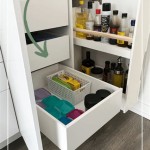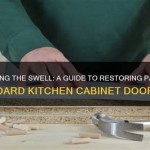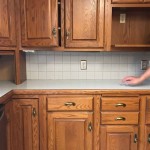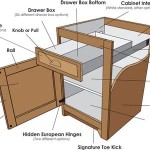What Is The Best Flooring For Kitchens And Bathrooms?
Selecting the ideal flooring for kitchens and bathrooms requires careful consideration of multiple factors. These rooms present unique challenges due to high moisture levels, potential spills, and frequent foot traffic. The best flooring options must be durable, water-resistant (or waterproof), easy to clean, and aesthetically pleasing to complement the overall design scheme. This article will explore various flooring materials suitable for these environments, highlighting their advantages, disadvantages, and key considerations for making an informed decision.
The kitchen often serves as the heart of the home, experiencing heavy use daily. Spills of food and liquids are common, and the flooring needs to withstand the impact of dropped items. Bathrooms, on the other hand, are constantly exposed to moisture from showers, baths, and sinks. Choosing the wrong flooring can lead to water damage, mold growth, and costly repairs. Therefore, understanding the properties of different flooring materials is crucial for ensuring longevity and maintaining a hygienic environment.
Water Resistance and Waterproofing
The primary concern when selecting kitchen and bathroom flooring is water resistance or, ideally, waterproofing. Materials that readily absorb water can warp, swell, and promote the growth of mold and mildew. This can compromise the structural integrity of the flooring and create an unhealthy living environment. It is essential to differentiate between water-resistant and waterproof options.
Water-resistant flooring can withstand occasional splashes and moisture, provided it is cleaned up promptly. However, prolonged exposure to water can still cause damage. Waterproof flooring, on the other hand, is impervious to water penetration and will not be affected by spills or continuous moisture exposure. For bathrooms, especially those with frequent shower use or small children, waterproof flooring is generally the preferred choice. In kitchens, waterproof options offer added peace of mind against accidental spills and leaks. Some materials achieve waterproofing through their inherent composition, while others require specific installation techniques or sealants to achieve this level of protection.
Different types of flooring materials offer varying degrees of water resistance and waterproofing. Natural wood, for example, is highly susceptible to water damage unless specifically treated and sealed. Conversely, vinyl and certain types of tile are inherently waterproof and require minimal maintenance. Understanding the specific water-related properties of each material is vital for making an informed decision based on the specific needs of the kitchen or bathroom.
Durability and Maintenance
Beyond water resistance, durability is another critical factor to consider. Kitchens and bathrooms experience significant foot traffic, and the flooring must be able to withstand wear and tear without showing signs of damage prematurely. Scratches, dents, and stains can detract from the overall appearance of the room and require frequent maintenance or even replacement.
The durability of flooring is often measured by its resistance to abrasion, impact, and staining. Materials with a high abrasion resistance rating are less likely to scratch or wear down over time. Impact resistance indicates the flooring's ability to withstand dropped objects without denting or cracking. Stain resistance refers to the ease with which spills can be cleaned without leaving a permanent mark.
Maintenance requirements are also an important consideration. Some flooring options requires regular sealing or polishing to maintain their appearance and protect them from damage. Others are relatively low-maintenance and only require routine cleaning with soap and water. The amount of time and effort one is willing to invest in maintenance should be factored into the decision-making process. For high-traffic kitchens, low-maintenance options are often preferable, while bathrooms may benefit from materials that are easily sanitized.
For kitchens, the flooring's ability to resist staining from food and grease is especially important. Certain materials, such as porous stone, may require sealing to prevent stains from penetrating the surface. In bathrooms, resistance to mold and mildew growth is crucial for maintaining a hygienic environment. Regular cleaning and proper ventilation can help prevent these issues, but choosing a flooring material that is naturally resistant to these organisms can provide an added layer of protection.
Types of Flooring Materials
Several flooring materials are commonly used in kitchens and bathrooms, each with its own set of advantages and disadvantages. These include tile (ceramic, porcelain, and stone), vinyl (sheet vinyl, luxury vinyl tile (LVT), and luxury vinyl plank (LVP)), laminate, engineered wood, and concrete. Understanding the properties of each material is essential for making an informed decision.
Tile: Tile is a popular choice for both kitchens and bathrooms due to its durability, water resistance, and wide range of aesthetic options. Porcelain tile is particularly well-suited for these environments due to its low water absorption rate, making it virtually waterproof. Ceramic tile is also a viable option, though it is slightly more porous and may require sealing. Stone tile offers a natural and elegant look but can be more expensive and require more maintenance than porcelain or ceramic. Grout lines, however, require regular cleaning and sealing to prevent staining and mold growth.
Vinyl: Vinyl flooring is a cost-effective and versatile option that is available in various forms, including sheet vinyl, LVT, and LVP. Sheet vinyl offers a seamless, waterproof surface that is easy to clean and maintain. LVT and LVP mimic the look of natural stone or wood while providing superior water resistance and durability. Vinyl flooring is also relatively soft underfoot, making it more comfortable than tile.
Laminate: Laminate flooring is a budget-friendly option that can replicate the look of hardwood or tile. However, it is not as water-resistant as vinyl or tile and is generally not recommended for bathrooms unless it is specifically designed for wet environments. Spills should be cleaned up immediately to prevent water damage. Laminate is more suitable for kitchens that are not prone to excessive moisture.
Engineered Wood: Engineered wood flooring offers the aesthetic appeal of hardwood but with improved stability and water resistance. It consists of a thin layer of hardwood veneer bonded to a plywood or fiberboard core. While more water-resistant than solid hardwood, it is still susceptible to damage from standing water and is not recommended for bathrooms. It can be a suitable option for kitchens, provided spills are cleaned up promptly.
Concrete: Concrete flooring offers a modern and industrial aesthetic and can be highly durable and water-resistant when properly sealed. It can be stained, polished, or textured to create a variety of looks. However, concrete can be cold and hard underfoot, and it may require sealing to prevent staining and water damage. It is a suitable option for both kitchens and bathrooms, provided it is properly installed and maintained.
The final decision on the best flooring material will depend on individual preferences, budget constraints, and the specific needs of the kitchen or bathroom. Carefully weighing the pros and cons of each option will ensure a flooring choice that is both functional and aesthetically pleasing for years to come.

What Flooring Is Best For The Kitchen Or Bathroom

Selecting The Best Flooring For Your Kitchen And Bathrooms Newhomesource

The Best Flooring For Your Bathroom Surplus Building Materials

The Pros Cons Of Bathroom Flooring Options Carpet Court

Waterproof Bathroom Flooring Options Twenty Oak

What Flooring Is Best For The Kitchen Or Bathroom
Vinyl Flooring In Kitchens And Bathrooms Tarkett

Luxury Vinyl Flooring Is A Great Choice For Chic Bathrooms

Best Bathroom Flooring Options Forbes Home

Tile Flooring Pros Cons Dartmouth Building Supply
Related Posts








